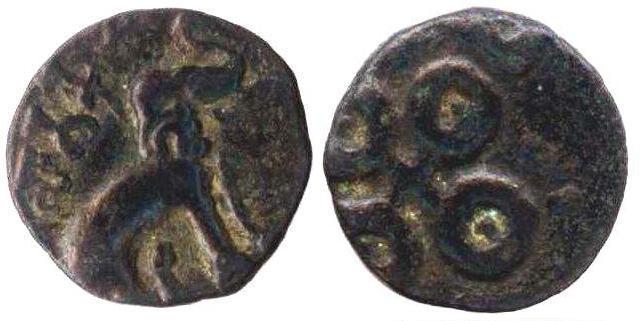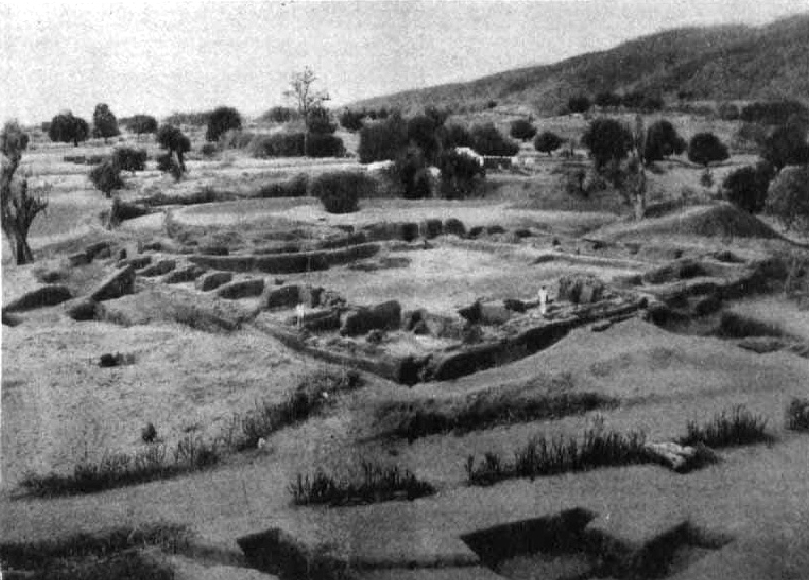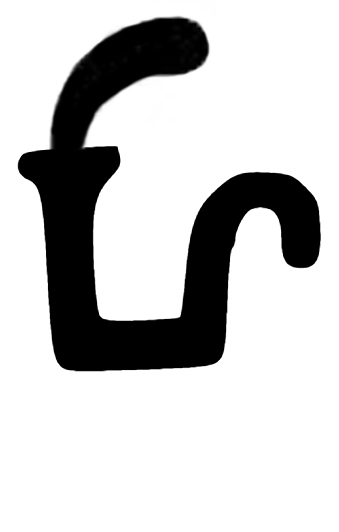|
Gupta Art
Gupta art is the art of the Gupta Empire, which ruled most of northern India, with its peak between about 300 and 480 CE, surviving in much reduced form until c. 550. The Gupta period is generally regarded as a classic peak and golden age of North Indian art for all the major religious groups. Gupta art is characterized by its "Classical decorum", in contrast to the subsequent Indian medieval art, which "subordinated the figure to the larger religious purpose". Although painting was evidently widespread, the surviving works are almost all religious sculpture. The period saw the emergence of the iconic carved stone deity in Hindu art, while the production of the Buddha-figure and Jain ''tirthankara'' figures continued to expand, the latter often on a very large scale. The traditional main centre of sculpture was Mathura, which continued to flourish, with the art of Gandhara, the centre of Greco-Buddhist art just beyond the northern border of Gupta territory, continuing to exert i ... [...More Info...] [...Related Items...] OR: [Wikipedia] [Google] [Baidu] |
Art Of Mathura
The Art of Mathura refers to a particular school of Indian art, almost entirely surviving in the form of sculpture, starting in the 2nd century BCE, which centered on the city of Mathura, in central northern India, during a period in which Buddhism, Jainism together with Hinduism flourished in India. Mathura "was the first artistic center to produce devotional icons for all the three faiths",Srinivasan, 4 and the pre-eminent center of religious artistic expression in India at least until the Gupta period, and was influential throughout the sub-continent. Chronologically, Mathuran sculpture becomes prominent after Mauryan art, the art of the Mauryan Empire (322 and 185 BCE). It is said to represent a "sharp break" with the previous Mauryan style, either in scale, material or style. Mathura became India's most important artistic production center from the second century BCE, with its highly recognizable red sandstone statues being admired and exported all over India. In partic ... [...More Info...] [...Related Items...] OR: [Wikipedia] [Google] [Baidu] |
Vakataka Dynasty
The Vakataka dynasty () was an ancient Indian dynasty that originated from the Deccan in the mid-3rd century CE. Their state is believed to have extended from the southern edges of Malwa and Gujarat in the north to the Tungabhadra River in the south as well as from the Arabian Sea in the west to the edges of Chhattisgarh in the east. They were the most important successors of the Satavahanas in the Deccan and contemporaneous with the Guptas in northern India. Little is known about Vindhyashakti (), the founder of the family. Territorial expansion began in the reign of his son Pravarasena I. It is generally believed that the Vakataka dynasty was divided into four branches after Pravarasena I. Two branches are known, and two are unknown. The known branches are the Pravarapura-Nandivardhana branch and the Vatsagulma branch. Gupta Emperor Chandragupta II married his daughter into the Vakataka royal family and, with their support, annexed Gujarat from the Saka Satraps in 4t ... [...More Info...] [...Related Items...] OR: [Wikipedia] [Google] [Baidu] |
Bodh Gaya Bodhisattva Inscribed Gupta Year 64, Ie 385 CE
Bodh may refer to: * Bodh (poem), a Bengali poem by Jibanananda Das * Bodh people, a community of Himachal Pradesh, India People * Bodh Singh Bhagat, Indian politician * Bodh Raj Sawhney, Indian judge See also * Bodhi (other) * Buddha (other) * ''Bodha'' (film), a 2018 Indian crime comedy film * Bodh Gaya, a city in Bihar, India * BOHD, a psychedelic drug * Baudh State, a princely state of India * Boudh Boudh, also known as Boudhgarh, is a town and a Municipality in Boudh district in the state of Odisha, India. It is the district headquarters of Boudh district. It is located on the bank of Mahanadi, the largest river of the state of Odisha ..., a town in Orissa, India * Bod (other) {{dab ... [...More Info...] [...Related Items...] OR: [Wikipedia] [Google] [Baidu] |
Sanchi
Sanchi Stupa is a Buddhist art, Buddhist complex, famous for its Great Stupa, on a hilltop at Sanchi Town in Raisen District of the States and territories of India, State of Madhya Pradesh, India. It is located, about 23 kilometers from Raisen, Raisen town, district headquarter and north-east of Bhopal, capital of Madhya Pradesh. The Great Stupa at Sanchi is one of the oldest stone structures in India, and an important monument to the historical architecture of India. It was originally commissioned by the Maurya Empire, Mauryan emperor Ashoka the Great, Ashoka in the 3rd century BCE. Its nucleus was a simple hemispherical brick structure built over the relics of the Gautama Buddha, Buddha. It was crowned by the Chatra (umbrella), chatra, a parasol-like structure symbolising high rank, which was intended to honour and shelter the relics. The original construction work of this stupa was overseen by Ashoka, whose wife Devi was the daughter of a merchant of nearby Vidisha. Sanchi ... [...More Info...] [...Related Items...] OR: [Wikipedia] [Google] [Baidu] |
Satavahanas
The Satavahanas (; ''Sādavāhana'' or ''Sātavāhana'', IAST: ), also referred to as the Andhras (also ''Andhra-bhṛtyas'' or ''Andhra-jatiyas'') in the Puranas, were an ancient Indian dynasty. Most modern scholars believe that the Satavahana rule began in the late 2nd century BCE and lasted until the early 3rd century CE, although some assign the beginning of their rule to as early as the 3rd century BCE based on the Puranas, but uncorroborated by archaeological evidence. The Satavahana kingdom mainly comprised the present-day Andhra Pradesh, Telangana, and Maharashtra. At different times, their rule extended to parts of modern Gujarat, Madhya Pradesh, and Karnataka. The dynasty had different capital cities at different times, including Pratishthana (Paithan) and Amaravati ( Dharanikota). The origin of the dynasty is uncertain, but according to the Puranas, their first king overthrew the Kanva dynasty. In the post-Maurya era, the Satavahanas established peace in the Decca ... [...More Info...] [...Related Items...] OR: [Wikipedia] [Google] [Baidu] |
Western Satraps
The Western Satraps, or Western Kshatrapas (Brahmi: , ''Mahakṣatrapa'', "Great Satraps") were Indo-Scythian (Saka) rulers of the western and central parts of India (extending from Saurashtra in the south and Malwa in the east, covering modern-day Sindh, Gujarat, Maharashtra, Rajasthan and Madhya Pradesh states), between 35 and 415 CE. The Western Satraps were contemporaneous with the Kushans who ruled the northern part of the Indian subcontinent, and were possibly vassals of the Kushans. They were also contemporaneous with the Satavahana who ruled in Central India. They are called "Western Satraps" in modern historiography in order to differentiate them from the " Northern Satraps", who ruled in Punjab and Mathura until the 2nd century CE. The power of the Western Satraps started to decline in the 2nd century CE after the Saka rulers were defeated by the Emperor Gautamiputra Satakarni of the Satavahana dynasty. After this, the Saka kingdom revived, but was ultimately defe ... [...More Info...] [...Related Items...] OR: [Wikipedia] [Google] [Baidu] |
Devnimori
Devnimori, or Devni Mori, is a Buddhist archaeological site in northern Gujarat, about from the city of Shamlaji, in the Aravalli District of northern Gujarat, India. The site is variously dated to the 3rd century or 4th century CE, or circa 400 CE. Its location was associated with trade routes and caravans in the area of Gujarat. Site excavations have yielded Buddhist artifacts dated prior to 8th-century in the lowest layer, mixed Buddhist and Hindu artwork from the Gurjara-Pratihara period in the middle, topped by Muslim glazed ware attributed to the 14th century. The site was excavated between 1960 and 1963. The site became flooded by the Meswo reservoir, a project started in 1959 and completed between 1971–1972 over the nearby Meshwo River. Archaeological finds Buddhist sculptures The site of Devni Mori included numerous terracotta Buddhist sculptures (but no stone sculptures), also dated to the 3rd-4th century CE, and which are among the earliest sculptures that can be f ... [...More Info...] [...Related Items...] OR: [Wikipedia] [Google] [Baidu] |
Mathura Art
The Art of Mathura refers to a particular school of Indian art, almost entirely surviving Sculpture in the Indian subcontinent, in the form of sculpture, starting in the 2nd century BCE, which centered on the city of Mathura, Uttar Pradesh, Mathura, in central northern India, during a period in which Buddhism, Jainism together with Hinduism flourished in India. Mathura "was the first artistic center to produce devotional icons for all the three faiths",Srinivasan, 4 and the pre-eminent center of religious artistic expression in India at least until the Gupta art, Gupta period, and was influential throughout the sub-continent. Chronologically, Mathuran sculpture becomes prominent after Mauryan art, the art of the Mauryan Empire (322 and 185 BCE). It is said to represent a "sharp break" with the previous Mauryan style, either in scale, material or style. Mathura became India's most important artistic production center from the second century BCE, with its highly recognizable red s ... [...More Info...] [...Related Items...] OR: [Wikipedia] [Google] [Baidu] |
Hellenistic
In classical antiquity, the Hellenistic period covers the time in Greek history after Classical Greece, between the death of Alexander the Great in 323 BC and the death of Cleopatra VII in 30 BC, which was followed by the ascendancy of the Roman Empire, as signified by the Battle of Actium in 31 BC and the Roman conquest of Ptolemaic Egypt the following year, which eliminated the last major Hellenistic kingdom. Its name stems from the Ancient Greek word ''Hellas'' (, ''Hellás''), which was gradually recognized as the name for Greece, from which the modern historiographical term ''Hellenistic'' was derived. The term "Hellenistic" is to be distinguished from "Hellenic" in that the latter refers to Greece itself, while the former encompasses all the ancient territories of the period that had come under significant Greek influence, particularly the Hellenized Middle East, after the conquests of Alexander the Great. After the Macedonian conquest of the Achaemenid Empire in ... [...More Info...] [...Related Items...] OR: [Wikipedia] [Google] [Baidu] |
Kushan Empire
The Kushan Empire (– CE) was a Syncretism, syncretic empire formed by the Yuezhi in the Bactrian territories in the early 1st century. It spread to encompass much of what is now Afghanistan, Eastern Iran, India, Pakistan, Tajikistan and Uzbekistan. Kushan territory in India went at least as far as Saketa and Sarnath, now near Varanasi district, Varanasi in Uttar Pradesh, where inscriptions have been found dating to the era of the Kushan emperor Kanishka the Great. The Kushans were most probably one of five branches of the Yuezhi confederation, an Proto-Indo-Europeans, Indo-European nomadic people of possible Tocharians, Tocharian origin, who migrated from northwestern China (Xinjiang and Gansu) and settled in ancient Bactria. The founder of the dynasty, Kujula Kadphises, followed Iranian and Greek cultural ideas and iconography after the Greco-Bactrian tradition and was a follower of the Shaivism, Shaivite sect of Hinduism. Two later Kushan kings, Vima Kadphises and Vasudeva ... [...More Info...] [...Related Items...] OR: [Wikipedia] [Google] [Baidu] |
Kushan Art
Kushan art, the art of the Kushan Empire in northern India, flourished between the 1st and the 4th century CE. It blended the traditions of the Greco-Buddhist art of Gandhara, influenced by Hellenistic artistic canons, and the more Indian Mathura art, art of Mathura. Kushan art follows the Hellenistic art of the Greco-Bactrian Kingdom as well as Indo-Greek art which had been flourishing between the 3rd century BCE and 1st century CE in Bactria and northwestern India, and the succeeding Indo-Scythian art. Before invading northern and central India and establishing themselves as a full-fledged empire, the Kushans had migrated from northwestern China and occupied for more than a century these Central Asian lands, where they are thought to have assimilated remnants of Greek populations, Greek culture, and Greek art, as well as the languages and scripts which they used in their coins and inscriptions: Greek language, Greek and Bactrian language, Bactrian, which they used together with t ... [...More Info...] [...Related Items...] OR: [Wikipedia] [Google] [Baidu] |
Terracotta
Terracotta, also known as terra cotta or terra-cotta (; ; ), is a clay-based non-vitreous ceramic OED, "Terracotta""Terracotta" MFA Boston, "Cameo" database fired at relatively low temperatures. It is therefore a term used for earthenware objects of certain types, as set out below. Usage and definitions of the term vary, such as: *In art, pottery, applied art, and craft, "terracotta" is a term often used for red-coloured earthenware sculptures or functional articles such as flower pots, water and waste water pipes, and tableware. *In archaeology and art history, "terracotta" is often used to describe objects such as figurines and loom weights not made on a potter's wheel, with vessels and other objects made on a wheel from the same material referred to as earthenware; the choice of term depends on the type of object rather than the material or shaping technique. *Terracotta is also used to refer to the natural brownish-orange color of most terracotta. *In architecture, ... [...More Info...] [...Related Items...] OR: [Wikipedia] [Google] [Baidu] |










